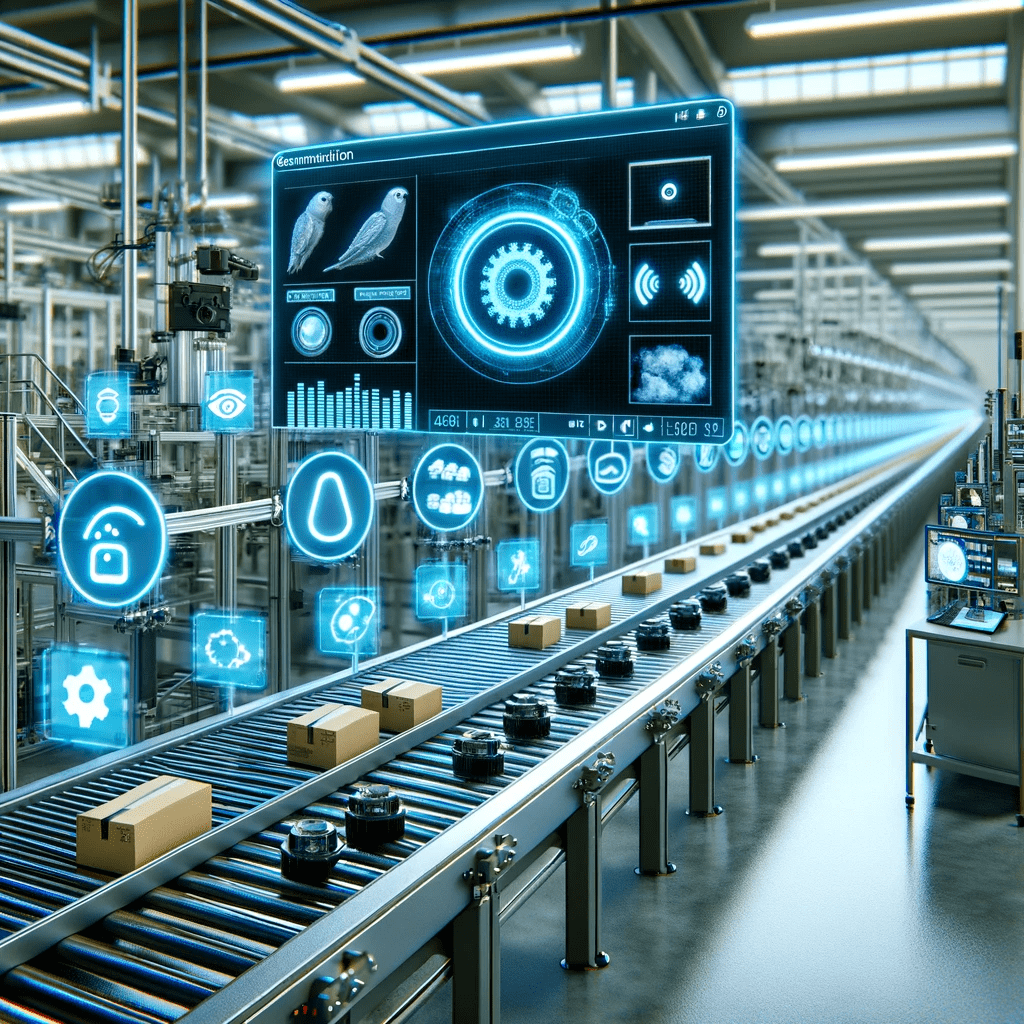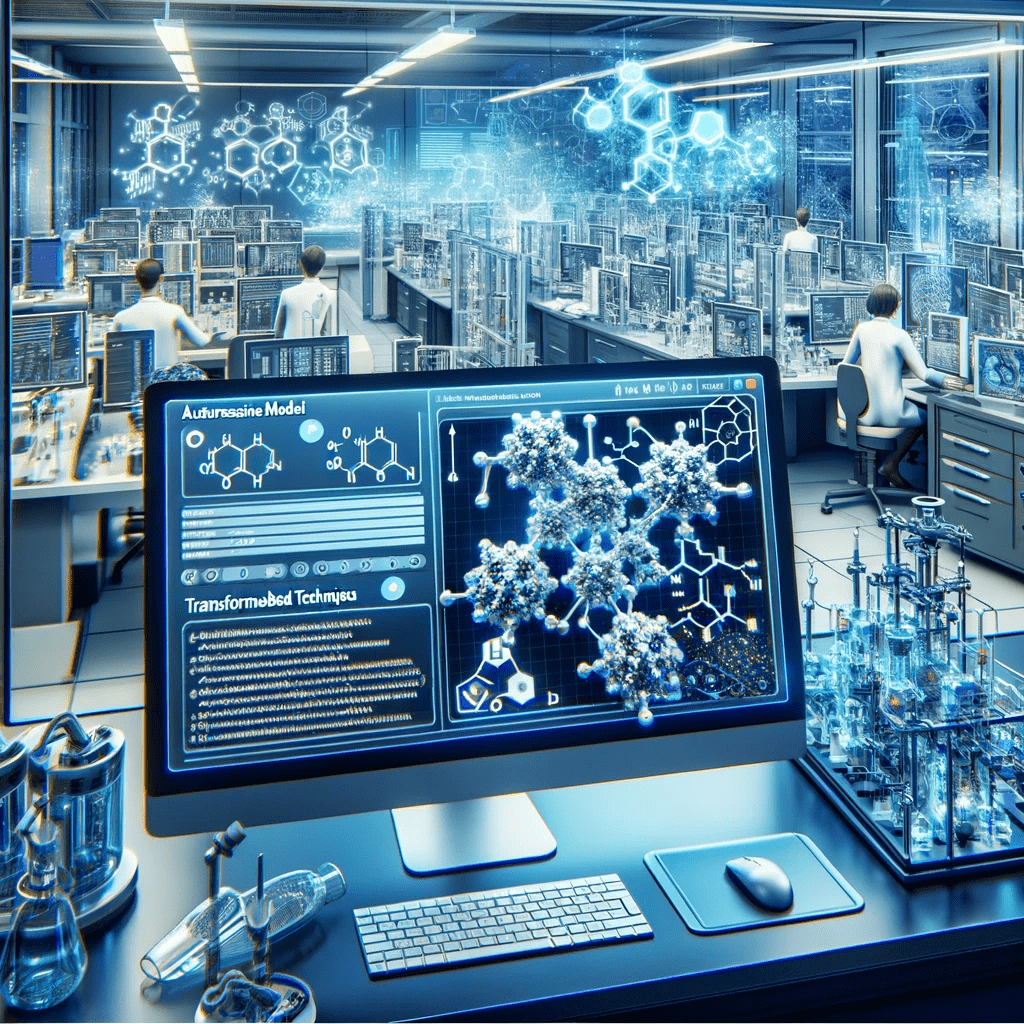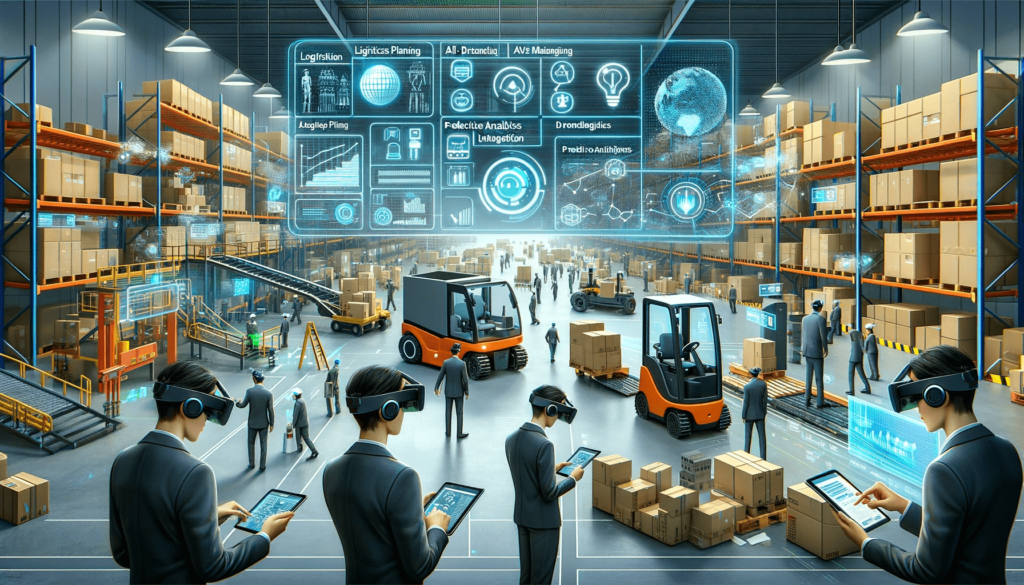Are you tired of the same old production methods that limit your creativity and flexibility? Do you feel like you’re missing out on the growing demand for personalized and unique products? Then, look no further than Generative Artificial Intelligence (Gen AI), the latest game-changing technology to hit the manufacturing industry.
With Generative AI, manufacturers can say goodbye to cookie-cutter products and hello to endless possibilities. It’s no wonder that companies across the manufacturing industry are jumping on board this innovative technology. After all, it’s also about efficiency and cost savings.
Using real-time data, Generative AI can optimize the production process to reduce waste and improve productivity. This means faster production times, lower costs, and higher-quality products. So if you’re looking to take your manufacturing business to the next level, don’t let traditional production methods hold you back.
This blog will give you a detailed guide on how generative AI can transform your manufacturing industry and what technologies you can adopt for further advancements. Let’s take a look!
Generative AI’s Role in Manufacturing
The role of generative AI in the manufacturing industry is significant and far-reaching. Generative AI can automate the design process, analyze data to identify patterns and anomalies and reduce the time and cost involved in product development. This technology can give manufacturers a competitive edge in the market and help them to stay ahead of the competition.
Key Facts
Here’s a couple of interesting facts –
- Reports have shown that the global AI manufacturing market is expected to reach $9,890,000,000 USD by 2027.
- According to the Manufacturing Leadership Council’s recent survey, Manufacturing in 2030 Survey: A Lens on the Future, 84% of respondents expect digital transformation to accelerate. Hence, we have more data and more opportunities to monetize it.
- Research suggests that European manufacturers are already embracing the AI surge, with 69% of German manufacturers saying they are ready to implement some form of AI in their operations soon.
- According to MarketResearch.Biz, the Generative AI in Manufacturing Market size is projected to surpass around USD 6,398.8 Million by 2032, and it is poised to reach a registered CAGR of 41.06% from 2023 to 2032. In 2022, the global generative AI in Manufacturing Market was worth USD 223.4 Million.
- The European Commission estimated that as much as 50% of production in some industries can be dispensed with altogether because of defects.
Here are some key points on the role of generative AI in the manufacturing industry:
- Generative AI can optimize product design by creating designs that are more efficient, sustainable, and cost-effective.
- Generative AI automates the design process, allowing human designers to create more options in a fraction of the time.
- Generative AI can help manufacturers to improve production processes by analyzing data from sensors and other sources to identify patterns and anomalies that can be used to optimize manufacturing processes.
- This can help manufacturers to reduce waste, increase efficiency, and improve the overall quality of their products.
- Generative AI can reduce the time and cost involved in product development by automating the design process and optimizing manufacturing processes.
- This can give manufacturers a competitive edge in the market and help them to stay ahead of the competition.
- Generative AI can be used to create better quality products that meet the demands of customers by analyzing customer data and feedback to identify trends and preferences.
- This can help manufacturers to build stronger relationships with their customers and increase customer loyalty.
Generative AI Use Cases for Manufacturing Industry
Generative AI, with its ability to create new and unique content, has found several compelling use cases within the manufacturing industry. Here are a few notable applications:
1. Quality Assurance

Many organizations are currently facing challenges with quality assurance.
The issue is that the costs associated with ensuring quality are significantly impacting their sales revenue. In some cases, these costs can eat up as much as 20% to 40% of the total revenue, which is a substantial amount.
Considering these staggering figures, it becomes apparent that improving quality assurance can have a significant positive impact on profits. To better understand this, let’s take the example of fast-moving consumer goods companies (FMCG). These companies have long struggled with poorly printed labels that cause disruptions in their production lines when applied to wet labels.
To address this problem, solutions like APRIL Eye have come to the rescue. Such solutions perform image classification and object detection. At incredible speeds of over 1000 packs per minute, it verifies date and label codes, overcoming challenges such as font distortion, missing text, and varying fonts. Hence, the production lines are no longer come to a halt due to label issues.
2. Detect Inspection
Quality control has always been a challenge in manufacturing, as human error can affect the accuracy of traditional assembly lines. However, with the advancements in AI, specifically computer vision, manufacturers now have a powerful tool to improve their inspection processes.
Computer vision uses automated optical inspection (AOI) to detect and identify defects in products. Using multiple cameras, it can easily identify missing pieces, dents, cracks, scratches, and other damages. As a result of the cameras capturing millions of data points, providing detailed information about the product’s condition.
Companies have already started adopting AI visual inspection in their manufacturing processes. For example, in smartphone manufacturing, companies like FIH Mobile are using computer vision to highlight defects and improve assembly lines in the future.
Manufacturers can save time and money through the use of computer vision by reducing errors and waste. The use of AI-based defect inspections ensures fast and accurate assessments of defects using techniques such as template matching, pattern matching, and statistical pattern matching. In addition, AI systems can continuously learn about defects, improving their performance over time.
3. Product Assembly
The shift towards automation is part of the broader trend in the manufacturing industry known as Industry 4.0. Manufacturers are increasingly embracing automated product assembly processes, and one technology playing a vital role in this transformation is AI.
Manufacturers use such technology to improve their product assembly processes in various ways. For instance, by employing computer vision inspection systems and 3D modeling designs, manufacturers can streamline specific tasks that have traditionally been challenging for human workers.
AAI, like Computer vision, also guide through Standard Operating Procedures, particularly when they have to switch between different products frequently. This enables more efficient processes and ensures that workers have clear instructions to follow for each step.
Moreover, this technolgy keep managers informed about any malfunctions or problems that require immediate attention. Installing computer vision-powered cameras send images into an AI algorithm, which scans and flag potential faults. When an issue is detected, the algorithm instantly notifies the manager, allowing prompt action to be taken.
AI plays a role in enhancing the precision of robotic arms used in the product assembly process. Its computer vision technology makes robotic arms more accurate and efficient by guiding and monitoring them.
4. Product Design and Optimization
Product design and development is a critical aspects of the manufacturing industry, and generative AI techniques can be used to optimize this process. Its machine learning algorithms help in generating optimized designs based on specific performance criteria.
So, businesses can create innovative, functional, and aesthetically pleasing products that meet customer needs and preferences. Generative AI can help manufacturers explore a wide range of design possibilities quickly and efficiently, allowing them to create optimized designs that meet specific requirements and constraints.
It can also reduce design time, optimize materials usage, and reduce production costs by automating the design process. Hence, through generative AI Product design and development, manufacturers can create better products that meet customer needs and preferences while also improving efficiency and reducing costs.
5. Predictive Maintenance and Quality Control
Predictive maintenance and quality control are critical components of the manufacturing industry, and generative AI techniques can help streamline and optimize these processes.
The algorithms of generative AI analyze sensor data from production processes and equipment to identify potential issues before they occur. It further enables manufactureres to perform manitenance and repairs proactively, reduces downtime, and minimizes the risk of defects and quality issues.
Such algorithms can also analyze data from visual inspection systems to identify defects and quality issues in real-time, allowing manufacturers to take corrective action quickly and efficiently.
6. Material Science and Synthesis
 I
I
n this, Generative AI techniques like autoregressive models and transformer-based models to predict the properties of new materials and synthesize materials with specific properties, such as strength, durability, and flexibility.
Generative AI algorithms can analyze large datasets and simulate various material combinations to generate optimized materials with desired properties. This can help manufacturers create more efficient and innovative materials that meet specific application needs.
In this way, Generative AI can also reduce the time and cost associated with traditional trial-and-error approaches and enhance the overall productivity of the manufacturing process.
7. Process Planning and Simulation
Generative AI can identify potential issues and optimize production efficiency by generating optimized process plans and simulating manufacturing processes. It also helps manufacturers reduce lead times, increase product quality, and improve overall efficiency by identifying the most effective manufacturing processes.
These techniques can also be used to simulate complex manufacturing environments, which can help identify bottlenecks and optimize production workflows.
With generative AI, manufacturers can simulate and optimize production processes without the need for costly and time-consuming physical trials, thereby reducing costs and improving productivity.
8. Human-Robot Collaboration
Human-robot collaboration is a key area where generative AI can be applied in the manufacturing industry. Robots and humans can collaborate better during production when trajectories are optimized using generative AI.
For example, generative AI can assist human operators in real-time decision making by providing insights on how to optimize robot trajectories and minimize the risk of errors or accidents.
Additionally, generative AI can be used to generate optimized paths for robots, allowing them to operate more efficiently and effectively in collaborative work environments. As a result, human-robot collaboration can be more productive, safer, and more efficient with the help of generative AI in the manufacturing industry.
9. Generative Design
Generative design is a specific use case of generative AI in the manufacturing industry to generate thousands of possible design alternatives based on specified constraints and performance criteria.
Through this process, manufacturers can explore a much larger design space and identify the most efficient, effective, and aesthetically pleasing designs for their products. In addition to reducing costs, generative design is also helpful for improving product quality and increasing production efficiency by streamlining the design process.
It also let’s designers focus on higher-level creative tasks rather than repetitive design iterations. This way, manufacturers can create more innovative, optimized, and personalized products that meet the evolving needs and preferences of their customers.
10. Production Planning and Optimization
Production planning and optimization is a critical process in the manufacturing industry that involves managing production schedules, optimizing workflows, and ensuring the timely delivery of products to customers.
Generative AI techniques can be used to analyze historical production data, identify production bottlenecks and inefficiencies, and generate optimized production schedules and workflows that can improve production efficiency, reduce downtime, and minimize the risk of quality issues.
These also use to simulate different production scenarios and optimize production lines, helping manufacturers make better decisions and improve overall performance.
With the help of generative AI, businesses in the manufacturing industry can streamline their production planning and optimization processes, reduce costs, and improve customer satisfaction by delivering high-quality products on time.
11. Quality Control and Inspection
Quality control and inspection are critical aspects of the manufacturing industry that ensure that products meet customer requirements and safety standards. Generative AI techniques is used to improve quality control and inspection by analyzing data from sensors and visual inspection systems to identify defects and quality issues in real time.
Machine learning algorithms are trained to recognize specific patterns and anomalies in the data, allowing manufacturers to quickly identify and address issues before they impact production.
In addition to automating inspection processes, generative AI can also reduce the risk of human error. This way, manufacturers can improve product quality, reduce waste, and enhance customer satisfaction.
12. Supply Chain Management

AI in Supply chain management is used to optimize inventory management and distribution strategies. Generate AI can optimize inventory management, production planning, and distribution by analyzing historical data and demand forecasts, allowing manufacturers to reduce lead times, minimize inventory costs, and improve customer service.
This can also help manufacturers improve their supply chain resiliency by identifying potential risks and disruptions and proactively addressing them. In addition, generative AI can be used to optimize logistics and transportation routes, reducing transportation costs and improving delivery times.
List of the Best Generative Design Softwares in 2024
Generative AI tools are becoming increasingly popular in the manufacturing industry due to their ability to improve efficiency, reduce costs, and optimize production processes. Here are the top 10 tools of generative AI in the manufacturing industry:
1. Autodesk Fusion 360
Autodesk Fusion 360 is a powerful CAD/CAM software that is specifically designed for the manufacturing industry. This software uses generative design technology to help engineers and designers create optimized designs based on specific performance criteria and manufacturing constraints.
Fusion 360 also includes simulation tools that allow for virtual testing and prototyping, reducing the need for physical prototypes and saving time and money in the design process.
Additionally, Fusion 360 is a cloud-based software, allowing for easy collaboration and data management across teams and locations. This is an essential tool for the manufacturing industry, helping to streamline the design process, reduce costs, and improve product quality.
2. Siemens NX
Siemens NX is a powerful computer-aided design software that is widely used in the manufacturing industry. Its generative design capabilities allow engineers and designers to optimize product design and improve production efficiency.
With features such as topology optimization, design validation, and simulation, Siemens NX enables users to create and test multiple design alternatives quickly and efficiently. It also supports various manufacturing processes, including CNC machining, additive manufacturing, and mold and die design.
With Siemens NX, manufacturers can improve their design and production processes and bring high-quality products to market faster.
3. IBM Watson Studio
IBM Watson Studio is a cloud-based data science platform that provides a suite of tools and services for developing, training, and deploying machine learning models in the manufacturing industry.
It offers a wide range of capabilities, including data preparation, data visualization, machine learning, and deep learning, allowing manufacturers to generate insights for predictive maintenance, quality control, and production optimization.
With IBM Watson Studio, manufacturers can improve their operational efficiency, reduce costs, and increase overall productivity. Also, IBM Watson Studio is designed to be scalable and flexible, making it an ideal solution for businesses of all sizes.
4. Ansys Discovery
It uses generative design to create and analyze thousands of design alternatives, allowing engineers and designers to quickly identify the optimal design based on specific performance criteria.
With Ansys Discovery, manufacturers can improve product performance, reduce development time, and minimize costs by identifying potential design issues early in the design process.
The software also allows for the simulation of various manufacturing processes, such as casting, injection molding, and additive manufacturing, enabling manufacturers to optimize their production processes and improve quality control.
5. GAMS
GAMS, or General Algebraic Modeling System, is a powerful mathematical modeling and optimization software that is commonly used in the manufacturing industry.
This software is used to solve complex mathematical problems and create optimization models for production planning, scheduling, inventory management, and supply chain management. Furthermore, it is designed to be flexible and customizable, allowing manufacturers to tailor the software to their specific needs and constraints.
With GAMS, manufacturers can optimize their production processes, reduce costs, and improve efficiency, making it an important tool for staying competitive in the fast-paced manufacturing industry.
6. TensorFlow
TensorFlow provides powerful tools to optimize production processes, improve product quality, and reduce costs. In manufacturing, the tool is commonly used for image and speech recognition, predictive maintenance, process optimization, and other applications that require advanced machine learning and deep learning algorithms.
Its flexibility and ease of use make it a popular choice for manufacturers looking to implement generative AI tools in their operations. TensorFlow’s ability to run on multiple platforms, including CPUs, GPUs, and mobile devices, further adds to its appeal in the manufacturing industry.
7. Keras
It is well-suited for image and text recognition, which can be used in quality control and inspection processes. Keras allows for easy and efficient prototyping of neural networks, which can be trained on large datasets to recognize patterns and generate insights for production optimization and predictive maintenance.
The software also supports transfer learning, making it a versatile tool for manufacturers looking to leverage AI for various applications. In simple words, Keras is a powerful tool for the manufacturing industry, allowing for efficient development and deployment of deep learning models for generative AI applications.
8. PyTorch
One of the key advantages of PyTorch is its flexibility and ease of use, making it easy for engineers and data scientists to create neural networks for generative AI applications. PyTorch is particularly useful in image and text recognition applications, allowing manufacturers to improve their quality control processes and optimize production processes.
Besides, PyTorch can be used for predictive maintenance, supply chain management, and product design optimization, making it a valuable tool for manufacturers looking to leverage the benefits of generative AI.
9. Apache MXNet
This deep learning framework is gaining popularity in the manufacturing industry due to its ability to support multiple programming languages and optimize both CPU and GPU computing.
MXNet is designed to handle large-scale machine learning projects, making it a powerful tool for manufacturers looking to optimize their production processes, improve product design, and reduce costs. Its ability to scale efficiently and handle large volumes of data make it a popular choice for manufacturing companies looking to leverage the power of deep learning and generative AI techniques.
MXNet’s flexible architecture and support for multiple programming languages also make it a popular choice for developers and data scientists working in the manufacturing industry.
10. RapidMiner
RapidMiner can analyze large amounts of data from various sources to identify patterns, predict equipment failure, and optimize production processes. With its user-friendly interface and drag-and-drop feature, it allows even those without extensive data science backgrounds to easily create predictive models and generate insights.
The platform’s ability to integrate with other tools and systems, such as ERP and MES, makes it a valuable addition to any manufacturer’s digital toolkit.
Predictive Maintenance Using Generative AI
The future of Generative AI in the manufacturing industry looks promising as the technology continues to evolve and improve. Some potential directions for the future of Generative AI in the manufacturing industry include:
- Increase Customization: Generative AI can be used to create bespoke products that cater to individual customer needs and preferences. In the future, we can expect to see more customized products being produced using Generative AI.
- Improve Efficiency: Generative AI can optimize production processes, reduce waste, and improve efficiency. In the future, we can expect to see even greater improvements in manufacturing efficiency as Generative AI continues to be used more widely.
- Better Product Design: Generative AI can create unique and innovative designs that are difficult or impossible to generate through traditional design methods. In the future, we can expect to see more products with novel and interesting designs being produced using Generative AI.
- Predictive Maintenance: Generative AI can be used to predict potential issues before they occur, reducing downtime and maintenance costs. In the future, we can expect to see more manufacturers using Generative AI for predictive maintenance tasks.
- Integration With Other Technologies: Generative AI can be used in conjunction with other technologies such as IoT (Internet of Things) and robotics to create smart factories. In the future, we can expect to see more advanced manufacturing processes that incorporate Generative AI alongside other cutting-edge technologies.
Hence, the future of Generative AI in the manufacturing industry looks bright, and we can expect to see continued advancements and innovations as the technology continues to evolve.
Conclusion!
So, by leveraging the power of Generative AI, manufacturers can streamline their operations, reduce costs, and create unique and innovative products that stand out in the market.
At RedBlink, an AI consulting and generative AI development company, we are at the forefront of the Generative AI revolution, providing cutting-edge explanations that enable manufacturers to harness the power of Generative AI to improve their operations and stay ahead of the competition. We are uniquely positioned to deliver innovative and effective keys that meet the needs of our clients. By hiring our skilled team of ChatGPT developers and machine learning engineers , businesses can unlock the potential of AI and enhance their operations with customized solutions tailored to their specific needs.
Whether you are looking to optimize your production processes, improve product design, or predict maintenance issues before they occur, RedBlink will help you achieve your goals. Contact us today to learn more about how we can help your manufacturing business thrive in the era of Generative AI.

Director of Engineering | CTO | Software Developer
Sunil Jain stands as a prominent figure in the tech industry, currently serving as the CTO at RedBlink Technologies. With a rich career exceeding 17 years, Sunil has carved a niche for himself in the realm of software development. His expertise spans across various sectors including Adtech, Insurance, Marketing, Lead Generation, and Medical, showcasing his ability to design enterprise-level solutions in diverse domains. Sunil’s role at RedBlink, a company known for its innovative approaches in technology, underlines his commitment to driving technological advancements. His extensive work experience, makes him a key player in shaping the future of software development and engineering.
